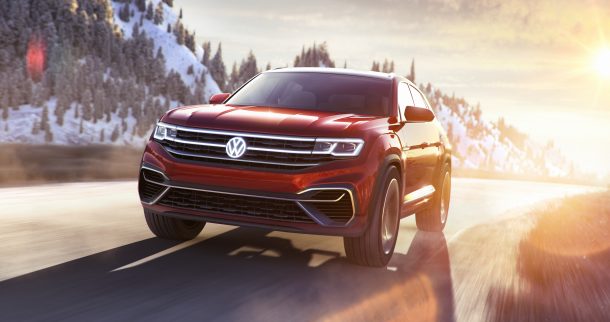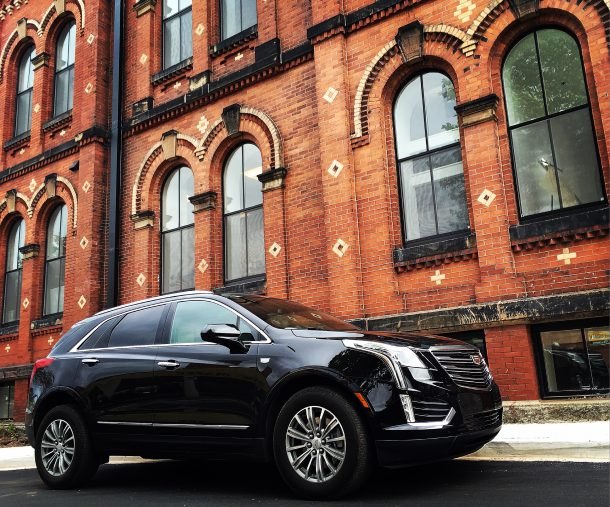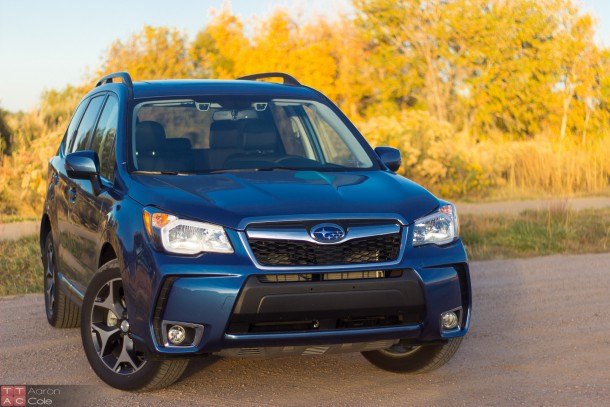#MidsizeSuv
GMC Just Revealed the Larger, More Tech-Packed 2024 Acadia
Midsize SUVs are many automakers’ bread and butter, so they work hard to keep the family haulers updated to stay competitive with the increasingly crowded field of alternatives. GMC’s midsize utility vehicle is getting an update for 2024, with increased exterior dimensions, updated tech, and a harder-core AT4 model with more off-road capability.
Fewer Seats, More MPGs: Volkswagen Debuts Atlas Cross Sport in New York
Regardless of where we think Volkswagen’s true strengths prevail, the company is dead set on electrification. Granted, much of this is the direct result of the diesel emissions fiasco. But it doesn’t appear to be solely interested in providing lip service to an angry public; it wants to build these cars and it really wants you to be excited about that.
The brand’s current lineup doesn’t include much in the way of electrics, e-Golf notwithstanding, but CEO Matthias Mueller has promised to unveil a new EV “virtually every month” as its multi-billion-dollar investments into new battery technologies and charging infrastructure begins to bear fruit. In the meantime, we’ve grown accustomed to seeing VW parade a steady stream of electric concept vehicles. Normally, these are part of Audi’s e-tron lineup or the VW’s new I.D. sub-brand. However, the electric push has started spilling over into the core brand, and the latest product is more than just a battery-driven green machine. It feels tangible, like it might be meant for everyone — not just EV enthusiasts.
Volkswagen’s Atlas is a relatively spacious three-row, midsize crossover — fairly fuel efficient for its size, but not a hoot to drive. VW wants to remedy this by hybridizing the MQB platform, chopping a row of seats, and adding a helping of power that won’t jack up your weekly fuel bill. More importantly, this two-row model seems to bridge the gap between practicality and fun.
2018 Volkswagen Atlas First Drive Review - Critical Mass
For whatever reason, Volkswagen has shied away from the mainstream, large, family vehicle market for decades. When most American parents and spawn headed to Wally World in massive station wagons, Volkswagen offered the Microbus. When minivans became the rage, the sages of Wolfsburg set forth the quirky, rear-engined Vanagon. And through the ‘90s, as the SUV became the default soccer mom transport, the Eurovan continued the tall and narrow van theme.
Certainly, the Routan was a typical minivan — albeit provided by Chrysler — and the Touareg followed a traditional (if pricey) luxury SUV path, but VW hasn’t been a player in the meat of the market. Considering the challenges the company has faced over the last couple years, Volkswagen simply cannot afford to yield high-volume market segments. Besieged dealers need something bigger than a midsized sedan to sell.
Most of all, as noted by Michael Lovati, Volkswagen’s Vice President of Midsize and Fullsize vehicles in North America, “VW needs to regain trust.”
Step one in rebuilding trust is the all-new, American-made 2018 Volkswagen Atlas, which aims squarely at the ever-popular three-row midsize crossover market, especially the beloved Ford Explorer and Honda Pilot.
Does Atlas hit the bulls-eye, or miss wildly?
Volkswagen Reveals Atlas, the Midsize Three-Row Crossover With VW's Future on Its Shoulders
The Atlas, Volkswagen’s entry into the hotly contested three-row crossover segment, is here — and it has the company’s future fortunes resting on its shoulders.
Volkswagen has not been doing well in the United States. Since 2012, its best sales year this millennia, VW has shed 30 percent of its sales volume. The brand that invented the compact car in the eyes of many Americans now finds itself in 14th place on the brand leaderboard with a 1.6 percent market share.
Dieselgate didn’t help, but its unbalanced product range may be the more nagging culprit. This is VW’s first mainstream, three-row crossover.
2017 Cadillac XT5 AWD Review - Tennessee Flat Top Box
When the original Cadillac SRX appeared for the 2004 model year, it rode atop a rear-wheel-drive unibody platform, offered three rows of seats, and asked a question rarely asked today: “V8 with that?”
Six years later, General Motors saw fit to yank the SRX out of that class and plunge it into the murderously competitive front-wheel drive, two-row luxury crossover field, shoving it in direct competition with the segment’s dominant sales king, the Lexus RX. Hand-wringing ensued, yet that iteration of the SRX sold nearly 100,000 copies globally in 2015. Not bad for a five-year-old model on the outs.
For 2017, Cadillac — drunk on the New York City skyline and “image spaces” in SoHo — introduced its CT6 sedan before turning its attention to updating its best seller.
Will Cadillac’s new utility, now christened XT5 and built in Saturn’s old Spring Hill digs in Tennessee, follow the brand’s relentless path to Audi-ization?
Doug Drives: How the Hell Does the Toyota Highlander Hybrid Not Have Any Competitors?
I was driving along the other day and I realized something: the Toyota Highlander Hybrid is currently the most popular vehicle in North America.
Okay, this might be a slight exaggeration. For instance, I am told that the bicycle is quite popular. But on a list of today’s most popular vehicles, the Highlander Hybrid is right up there with the bicycle, and the wheelchair, and that Ford pickup that sells more units in an afternoon than Ferrari sells globally in an entire calendar year.
It is very obvious to see why the Highlander Hybrid is so popular. For one thing, it’s a normal family SUV with three-row seating, which is incredibly hot right now; so hot that I am quite certain it is not actually possible to rear children in today’s society without a three-row SUV. If you showed up at a child’s birthday party in a Toyota Camry, and you had forgotten to dress your child, and you had brought the wrong child, and your child was vomiting all over everything in sight, people would not call attention to your child-related issues. They would ask: Why don’t you have a three-row SUV?
2016 Subaru Forester XT Review - More Isn't Always More
According to my nephew and me: If one is good then 100 is a good place to start.
My nephew is 11. I’m 33. Hopefully his gene pool is deeper than mine. But excess is extra good in my life. I appreciate a larger-than-I-need TV most nights and not one, but two, cheeseburgers in my value meals sometimes. If a Forester is good then a turbo Forester must be great according to my juvenile definition of the world.
Already one of the best crossovers on the market, the Forester actually benefits from Subaru’s glacial powertrain pace: flat-four up front, all-wheel drive underneath — and they’ll check back sometime during the next decade. The naturally aspirated, older 2.5-liter flat four does work in pedestrian Foresters; its 170 horsepower is competent like gas station coffee. Force feeding 80 more ponies — to a total of 250 for the turbo XT — should make the Forester better. It could, right?
I’ll put it this way: Does gas station creamer make gas station coffee better?






















Recent Comments